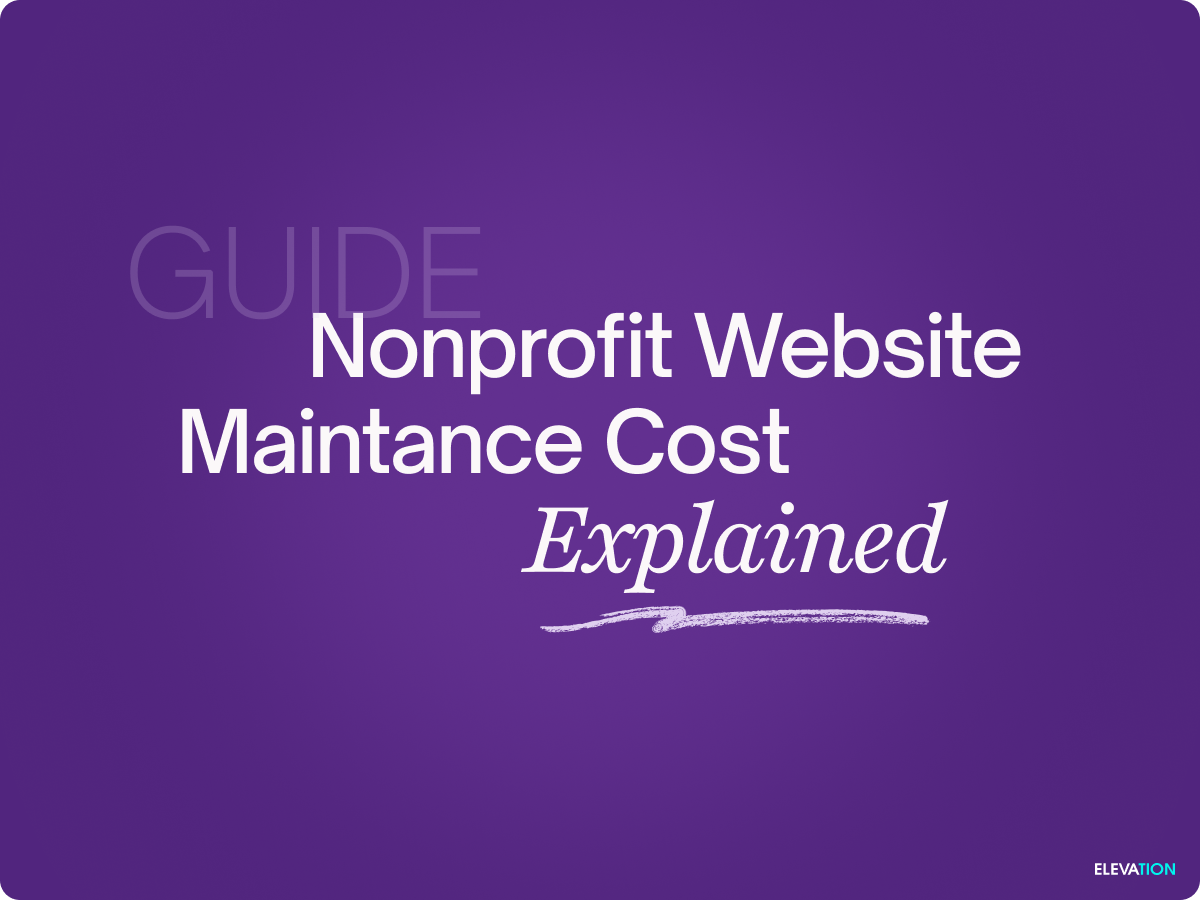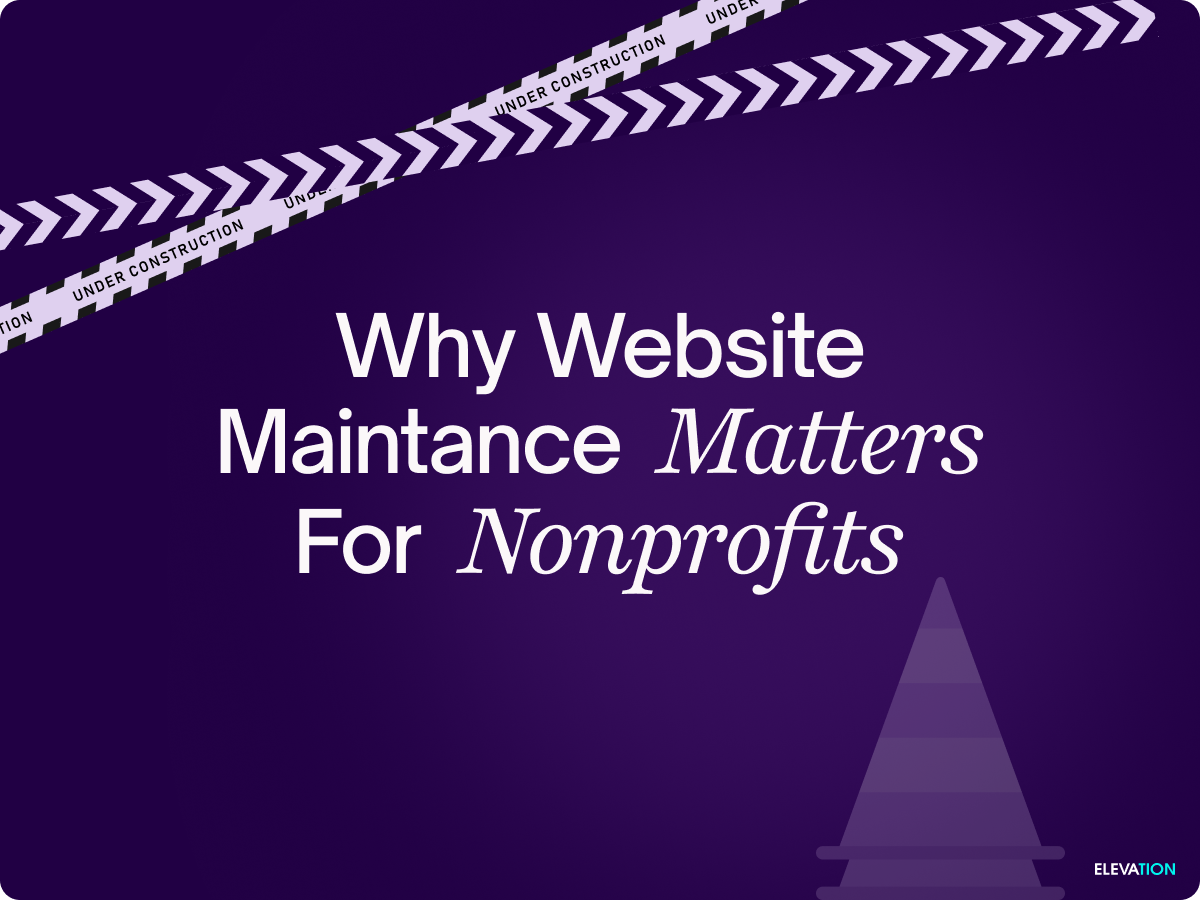Choosing the Best Website Support Strategy
Deciding how to maintain your nonprofit’s website is no small task. For many organizations, the choice boils down to two options—should you manage website support in-house or partner with a professional service? Each approach comes with its own set of benefits and challenges, and finding the right path depends on your team’s skills, resources, and goals.
If you’re feeling uncertain, don’t worry. This guide will help you weigh the pros and cons of in-house and professional website support. Plus, we’ll explore a “hybrid” option for nonprofits looking for balance. By the end of this article, you’ll have greater clarity on which choice suits your organization’s unique needs.
The Pros of Managing Website Support In-House
For nonprofits with tight budgets or a desire for more day-to-day control, managing website support internally can seem like an attractive option. Here’s why it works for some organizations.
Cost-Effectiveness
One of the primary motivations for choosing in-house support is budget constraints. Nonprofits often operate with limited financial resources, and handling website support internally eliminates the need for added service fees or retainers.
Instead of paying a professional agency, you might train an existing team member or leverage volunteers with technical skills. These cost savings can then be reallocated to other operational needs, like running programs or funding outreach campaigns.
Full Control
When you manage website support in-house, you retain full control over everything—from deciding which updates to prioritize to how fast you address issues. This level of autonomy can be beneficial for organizations with specific workflows or where agility is essential to operations.
For instance, in-house teams can quickly adjust the website to reflect last-minute changes, like adding a major campaign update or real-time donor acknowledgments.
Quick Fixes
For minor issues, such as tweaking page content or updating a plugin, having someone from your team handle support can often be faster than waiting for an external provider. This immediacy is helpful when making changes that require a quick turnaround time, such as correcting typos or swapping images.
The Cons of Managing Website Support In-House
While DIY website support can work for certain nonprofits, it’s not without its downsides. Here are some common drawbacks to consider.
Limited Expertise
Nonprofits often lack the technical expertise required to handle advanced issues like malware removal, accessibility audits, or SEO optimization. If your in-house team lacks experience, you may struggle to maintain your website properly.
Mistakes made due to inexperience—such as deleting a critical file or applying incorrect updates—can lead to costly downtime or irreversible data loss.
Time-Consuming Tasks
Even if someone on your team has the skills, website support can be time-intensive. Routine maintenance tasks like troubleshooting errors, applying security patches, or creating backups can eat into hours that could be better spent on your core mission instead of managing technical tasks.
Nonprofits with limited staffing may find themselves stretched too thin, resulting in burnout or delayed responses to critical issues.
Risk of Mistakes
Without proper training or attention to the latest technologies, in-house teams are more likely to make mistakes that compromise the website’s functionality or security. Small issues, like ignoring an outdated SSL certificate, can escalate into major problems that tarnish your organization’s reputation.
The Pros of Outsourcing Website Support
For nonprofits looking to offload technical responsibilities, partnering with professional website support providers offers a range of benefits.
Access to Expertise
Working with professionals means your website is in the hands of experts who specialize in areas like cybersecurity, user experience, and optimization. These providers stay current on the latest trends and tools, ensuring your website meets industry standards.
For example, a professional agency might flag vulnerabilities non-specialists would overlook, such as improper database configurations or weak passwords.
Continuous Monitoring
One of the advantages of outsourcing is the peace of mind that comes with 24/7 monitoring. Many professional services offer round-the-clock oversight to spot and address issues like downtime, security breaches, or performance hiccups before they affect your audience.
Enhanced Security
Security is non-negotiable, especially for nonprofits collecting donor data or handling online transactions. Outsourcing to professionals ensures your website benefits from robust firewalls, SSL renewals, malware scanning, and timely software updates—all critical for staying secure.
Peace of Mind
With professionals managing your website support, your team is free to focus on your nonprofit’s mission. Outsourcing removes the stress of day-to-day maintenance, allowing you to dedicate time to programs, fundraising, or volunteer coordination instead of worrying about technical hiccups.
The Cons of Outsourcing Website Support
Despite its many advantages, outsourcing also has its challenges. Be sure to weigh these potential drawbacks.
Recurring Costs
Professional services typically come with recurring fees—whether hourly payment, a monthly retainer, or annual contracts. These costs can add up, especially for smaller nonprofits operating on a shoestring budget.
While outsourcing saves time and reduces errors, the financial commitment may be a significant hurdle for some organizations.
Reliance on a Provider
Depending on an external team to handle website maintenance can sometimes feel like a dependency. If the provider has slow response times or doesn’t align with your organization’s sense of urgency, it could result in delays or frustrations.
Additionally, any breakdown in communication, such as unclear task responsibilities, could disrupt your nonprofit’s workflow.
The Hybrid Option
If neither a fully DIY nor fully outsourced approach feels right, the hybrid model might be the perfect middle ground. This option allows nonprofits to handle simple, everyday tasks internally while delegating more complex or critical issues to professionals.
How It Works
- Your in-house team completes basic updates, such as posting event announcements or tweaking blog content.
- Advanced tasks, like technical troubleshooting, heavy-duty security fixes, or large redesigns, are outsourced to experienced providers.
Why It’s Effective
This approach strikes a balance between cost and expertise. You save money by keeping smaller updates in-house, but you also avoid risks by outsourcing tasks beyond your team’s scope. Additionally, partnering with professionals on an “as needed” basis limits financial strain, compared to full-service outsourcing.
The Next Step
If your team has the expertise and time, handling basic tasks in-house can save costs. However, for specialized support requiring consistent monitoring and heightened security, outsourcing gives you the peace of mind to focus on your mission.
A hybrid option may deliver the best of both worlds. By combining in-house management with professional help for complex tasks, your nonprofit can maintain an affordable, high-performing website that empowers your organization rather than hinders it.
Evaluate your team’s capacity and technical knowledge. If you’re unsure of your website support capabilities, consider consulting a provider like Elevation.


